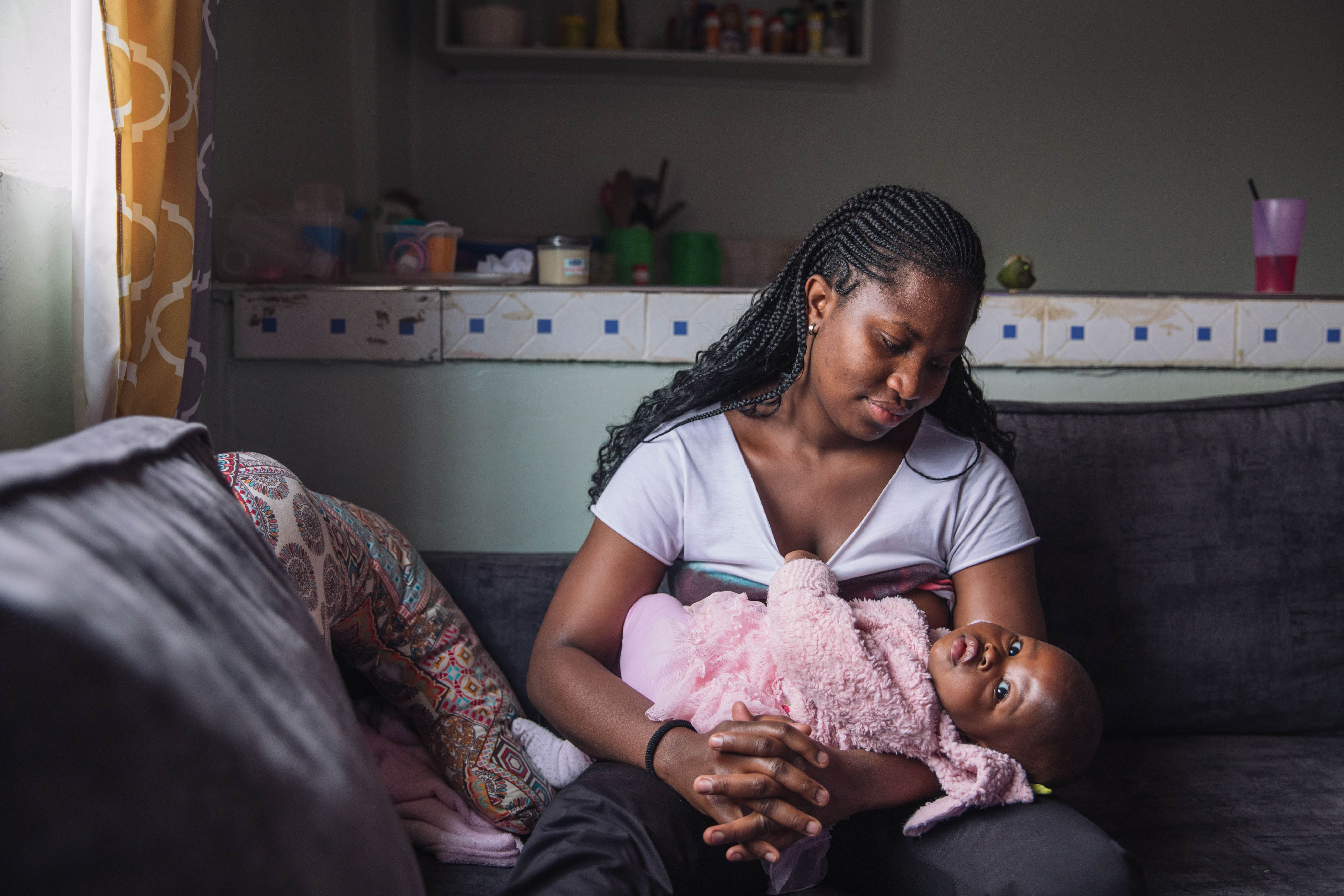Photography by Sarah Waiswa, Kenya. Toshiki Senoue, Japan. Sonja Siikanen, Finland. Kim Raff, USA
The morning after I gave birth to my first child in Tokyo, I looked across the endless cityscape that still felt so unfamiliar and realised I might have made a terrible mistake. I had moved there from the US for my husband’s work when I was six months pregnant. Now, thousands of miles from my family and with a new baby, I was filled with a deep longing for home.
Still, I came to understand there were advantages to being in Japan, where a declining birth rate means support for young families is a national priority. In the years that followed, I also became familiar with the contours of Japanese motherhood: a status upon which the country bestows a bevy of social services, but in return demands significant personal sacrifice, particularly with respect to mothers’ professional ambition. It occurred to me that being pro-natal – designing policy to increase the birth rate – is not the same as being pro-woman.
When we moved back to the US after nearly seven years away, and now with three children, I approached motherhood there with the same curiosity and saw the inverse problem: American mothers were expected to succeed at work and at home without any support programmes; no universal daycare or guaranteed paid leave; no real infrastructure for young families. My friends and I cobbled together childcare and tried to keep our careers afloat. What real choice did we have about how to be mothers, professionals, partners? We were simply surviving. I wondered: could a different system give mothers more control over their own lives? To answer that question, I followed four women – from the US, Japan, Kenya and Finland, who all had babies in January 2022 – through their first year as parents.
What I learned was that the way societies support families is critical to how women experience motherhood. Because while parents might feel like they have the freedom and responsibility to raise their children as they want, the truth is that many of the things that shape parenting – access to parent networks, sound medical advice, how to divide labour with their partner, even babysitters (taboo in Japan) – are heavily determined by the social structures of the place in which they give birth. Often women are asked to sacrifice freedom for support, when they should have both.
Chelsea, Kenya
“These old guys who’ve been in politics for years don’t care about us”
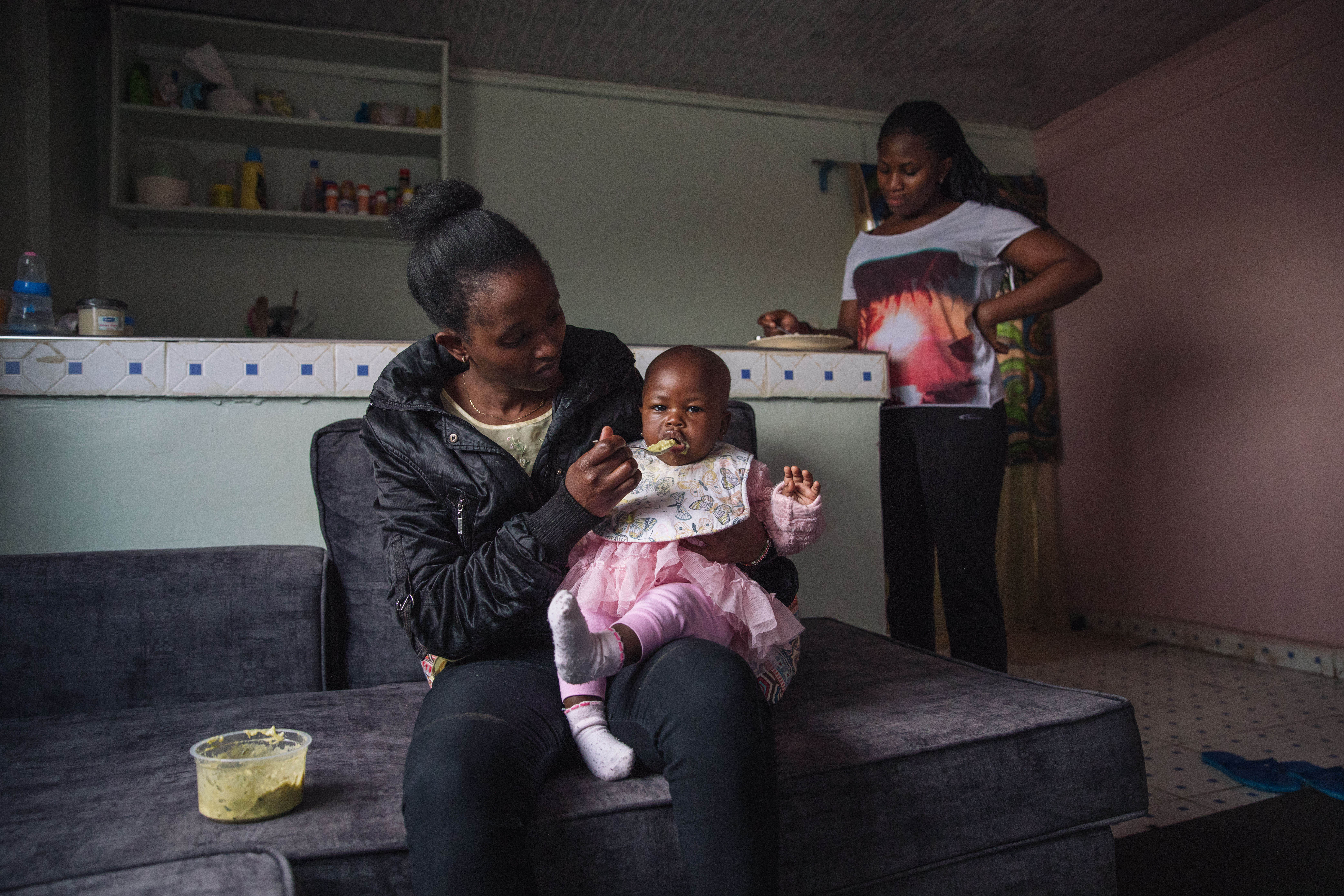
This small Nairobi apartment isn’t the place Chelsea would have chosen to raise a child. At 38 weeks pregnant, though, she’s hopeful she won’t be here much longer. “We might move in with my boyfriend,” she says.
Chelsea, 24, grew up nearby, then left for a top university in Eldoret, a smaller city surrounded by farmland and bisected by the Sosiani River. She loved its natural beauty and excelled in her classes on tourism and computer science. During her last year, her stepfather bruised his leg in a motorbike accident and dismissed his symptoms until he developed an embolism, but by then it was too late. Chelsea wanted to come home to grieve, but her mother, Ada, told her not to interrupt her education.
Chelsea only found out months later how depressed her mother had become and that it had driven her to drink, to the point that her organs began to fail. She died, too, just five months after her husband.
Somewhere in the haze and throb of nightclubs, Chelsea found comfort in an older man named Joseph. A few months later, she was pregnant. When Chelsea delivers their baby, Joseph is not there. Instead, she grips her friend Vee’s hand and asks for pain medication only to learn it’s prohibitively expensive. Money makes a real difference to how you give birth in Kenya, in part because the healthcare system, which was originally modelled on the British National Health Service, has since incorporated elements of the American system, with private employer-based insurance, producing the current two-tiered system.
At expensive private hospitals, birthing mothers have well-appointed rooms, tubs for water births and the option to bring one’s own doula. Public hospitals, by contrast, become massively overcrowded, says Dr Rosa Chemwey Ndiema, who runs the maternity ward at Kenyatta National Hospital. Designed for about 65 patients, it has had to accommodate as many as 300 at a time because regional hospitals can’t care for them, due to lack of running water, gloves, or a trained obstetrician. That means three or four women in active labour might share a single bed.
Chelsea’s delivery at a small private hospital, though painful, is comparatively smooth. She is exhausted by the end, but gazes affectionately at her new daughter and tells Vee she’s named her Ada. Afterward, Joseph does not visit and Chelsea struggles to care for Ada alone. Following three months paid leave, she returns to work at a branch of a large commercial bank, only to discover her office does not have a pumping space as required by law, so she uses a storage room. On her first day back a co-worker enters to find Chelsea wide-eyed and half-naked. Afterwards, Chelsea emerges to find a message from her nanny saying she’s run out of pumped milk and the baby is crying. Chelsea can’t afford formula so she has to leave early.
Soon after, both she and Ada are hospitalised with flu complications. They receive antibiotics and go home to rest. The next morning, Chelsea’s manager, Grace, visits the hospital, where nurses tell her Chelsea has already left. Grace accuses Chelsea of lying about her health and schedules a disciplinary meeting where Chelsea explains she is the sole provider for her baby and is doing her best to fulfil her professional responsibilities. The four men seem unmoved and she is fired.
Chelsea is devastated, then relieved. “I feel as if I’ve left something very toxic, like a burden was lifted.” She opens a stall selling surplus apparel called kafa ulaya, dead white man’s clothes. It’s a struggle to be the sole breadwinner and caregiver, and she wishes she had the community support her mother and grandmother did when they were raising children, before capitalism replaced traditional systems. Chelsea doesn’t have faith that her elected leaders will do much to help. “You see these old guys who have been in politics for so many years, none of them really care about us. They don’t understand how mothers have to struggle to balance a career and motherhood, it’s not easy.”
Motherhood in numbers: Kenya
•
2% of women have an epidural
•
8-12% of fathers attend the birth
•
90 days at full salary: guaranteed paid maternity leave
•
2 weeks at full salary: guaranteed paid paternity leave• No national universal daycare
•
$1 a day: average daycare cost (although centres are overcrowded)
Tsukasa, Japan
“I do want another baby, but with this system, we can’t afford it”
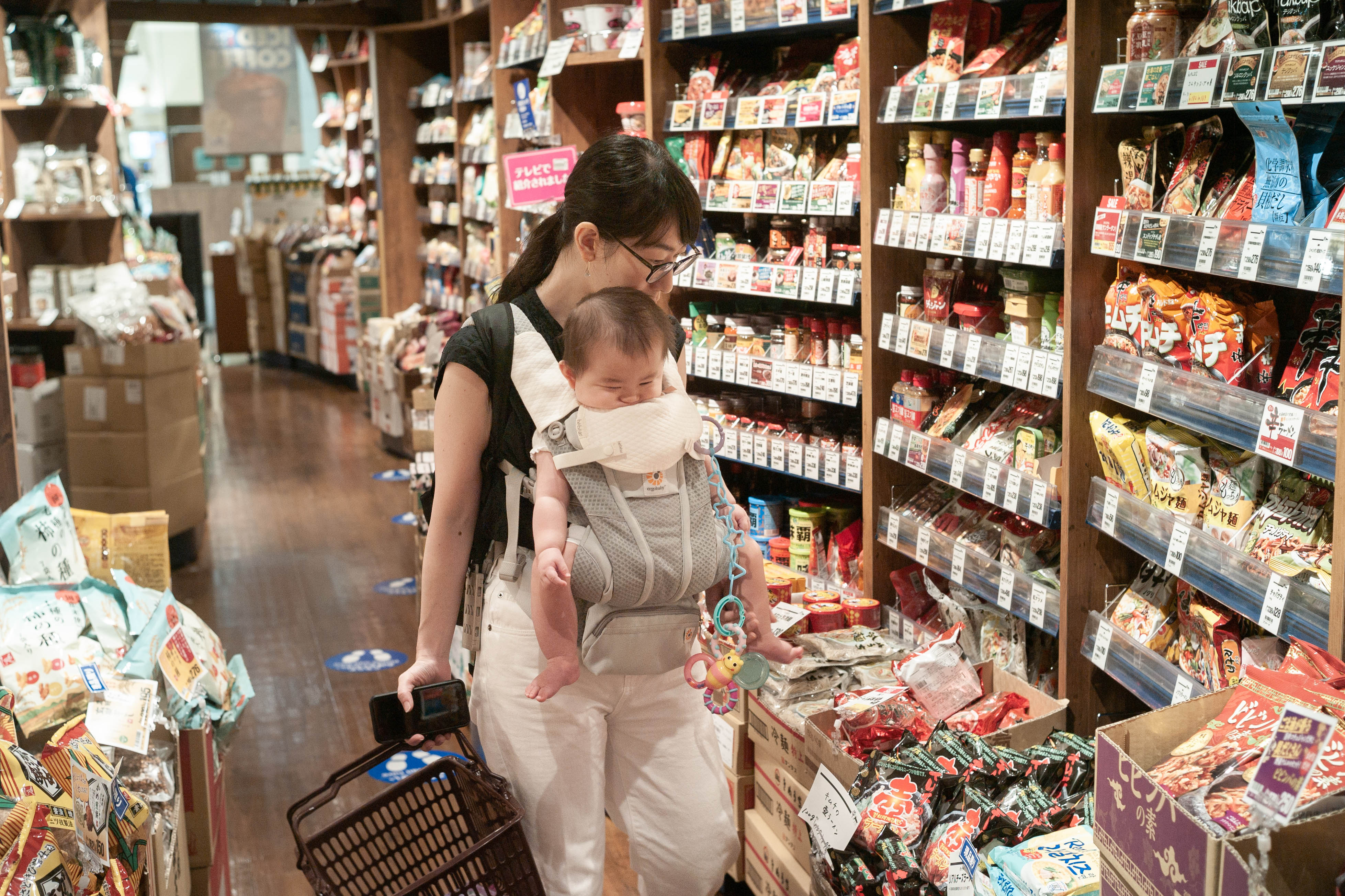
Tsukasa’s Tokyo neighbourhood is lined with tiny cafés that she frequents with her husband Kaz until the nausea starts. She’d felt this way twice before, but both times experienced a sudden lack of queasiness and knew something was wrong. Now, on her third pregnancy, she worries she could miscarry again, and so does her doctor. He prescribes bed-rest, so she takes paid leave from her job as an office manager at a video-streaming service, four months before her due date.
As that day approaches, she’s anxious. “I wanted anaesthesia so I don’t suffer too much, but the hospital told me they don’t provide it.” In Japanese Buddhism, the pain of childbirth is believed to bond the mother and child and prepare women for the trials of motherhood. Suffering is considered virtuous, foundational, even, to parenthood. There’s also scepticism about opioids that dates to the Opium Wars, so pain medication is typically not available at maternity hospitals.
During labour, Tsukasa endures the pain alone – Kaz can’t attend because of lingering Covid restrictions – and urges herself not to panic. “Suddenly,” she recalls, “I can’t breathe.” A midwife arrives and slips an oxygen mask over Tsukasa’s face, then moves her to the delivery room. Tsukasa reaches for something to grip and finds a thin metal rail on the side of the bed. She wills her body to relax. It helps that she is no longer alone. In the delivery room, four midwives attend to her. She is so grateful to be ensconced in this circle of proficient and caring women, she feels it’s almost mystical. An hour later, the baby begins to emerge. At the sound of her daughter Rota’s first cry, Tsukasa’s eyes also fill with tears. “I just felt so happy – amazed that my body made her and also at how strong women are for being able to do this.”
Afterward, she returns to her mother’s home in Matsumoto for the first postpartum month; a typical path, according to Tomomi Yamamoto, director of nursing at Seibo Hospital. “But if family members can’t do the caregiving, we arrange other support, including from public institutions.” The government announced in 2019 that new mothers would have access to postpartum care centres where midwives provide round-the-clock care and guidance on how to breastfeed and look after babies. They also incorporate kampo, traditional medicine that focuses on temperature regulation.
Tsukasa does the same and keeps warm by staying indoors, not even washing her hair. But the stress of caregiving starts to seep into the cracks of her relationship with her mother and harden there, making them both inflexible when problems arise. Like when Tsukasa struggles to breastfeed and her mother casually suggests she use formula. About half of new Japanese mothers exclusively breastfeed for the first five months. Overall, 80% of mothers do some breastfeeding, even if they also use formula. Tsukasa just wants to make the decision herself. “My mother doesn’t need to raise Rota, all she needs to do is love her grandchild.”
Tsukasa, 33, is relieved to return to Tokyo, and to Kaz, though he’s often working, as a composer for pop musicians. He’d hoped to be more involved, but it remains taboo for men to sacrifice professional responsibilities for domestic ones. Still, in surveys, young men say they want more balance and to avoid devoting their lives to a company only to retire and become nure-ochiba, wet leaves stuck to their wives’ shoes.
At the end of her year-long maternity leave, Tsukasa learns she will be moved to a new position. Her commute is now 90 minutes and her new manager is unsympathetic when Rota gets sick and Tsukasa has to leave early. After two months, Tsukasa resigns. She never expected to be a housewife, but that seems to be her fate, at least until Rota attends kindergarten. By then, Tsukasa will be in her late 30s and “the older you are, particularly women, the less a company wants to hire you”. The future she’d envisioned – a creative career, more than one child – seems unthinkable. “I do want another baby, but with this system, we can’t afford it.”
Rota wakes from her nap and Tsukasa lifts her from the futon. “You know, sometimes I’d like to have just a little bit of freedom, to read a book or maybe study again,” Tsukasa says. She’s sacrificed so much to a system that she feels has asked more of her than it should have, because there is nothing she would not sacrifice for Rota. “She expanded my sense of love, she is beyond my imagination. This is a creature to whom I would give anything, I would give everything.”
Motherhood in numbers: Japan
•
16% of women received an epidural in 2023 (double the figure from 2020)
•
65-70% of fathers attend the birth
•
1 year guaranteed paid maternity leave
•
1 year guaranteed paid paternity leave
•
6 weeks: age at which public daycare starts
•
70,000 yen (£350) per month, income-based: average daycare cost
Anna, Finland
“The system works quite well, we don’t have to worry that much about the costs”
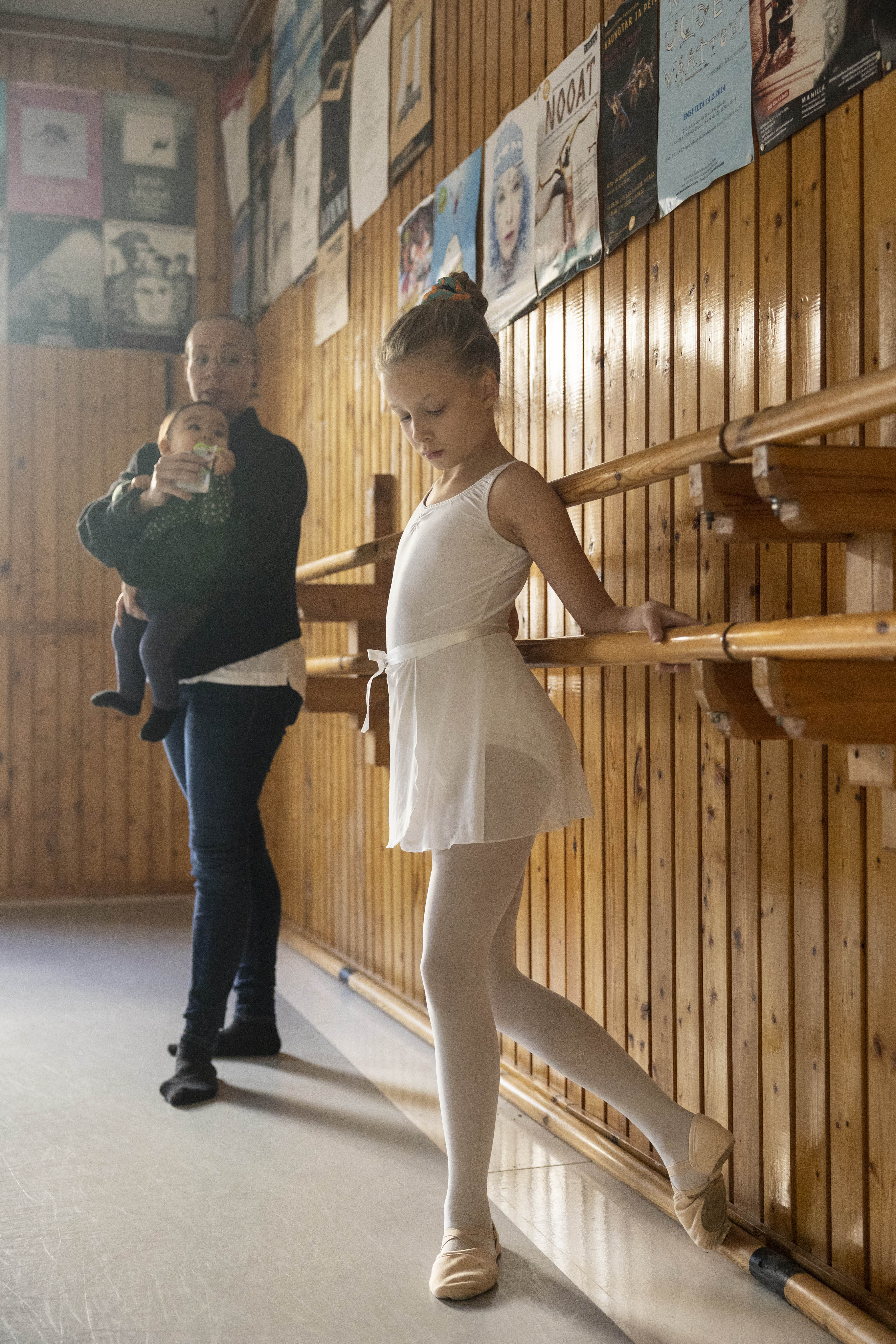
Anna, 36, cuts an elegant figure at eight months pregnant in a form-fitting black dress. Still, she feels leaden on her feet as she clears dinner plates with her partner, Masa, 45. Liv, her nine-year-old from a previous relationship, sits nearby, headphones on.
Anna’s leave from her job designing large events started a month before birth and she’s already washed the durable little clothes from the “baby box” Finland gives expectant mothers who use the public maternity system. Almost all do, and Anna is happy with her experience: three midwives work in shifts during her 12-hour labour, and she only sees a doctor to receive spinal anaesthesia. She says, “I took every kind of pain relief available” – 92% of birthing Finnish women use pain relief, one of the highest rates in the world.
Afterwards, Masa watches Anna settle in to breastfeed their baby, Luka. “There’s a natural connection,” he says, which he hadn’t understood. He has no one to help him figure out his role, though; he doesn’t remember his own father, who died when he was growing up in Asia.
Things get harder when Luka develops jaundice and the doctor advises Anna to breastfeed as much as possible. Anna can hardly find a moment for even her most fundamental needs: eating, sleeping, bathing. Masa asks if she’d like to shower and Anna gratefully accepts, but soon realises Masa hasn’t returned to collect the baby. She’s angry that he’s failing to do the basics. “Finnish society is very equal, there’s not this idea that the woman is the only one taking care of the child.”
A few weeks later their fighting gets worse when Masa tells Anna as she is breastfeeding that he doesn’t think the baby is eating enough and takes Luka to give him formula. They argue and Masa storms from their flat. “It was a very charged situation,” he says. Soon the relationship breaks down.
It seems clear their only path forward is through the legal system. Luka lives with Anna and sees Masa at court-mandated meetings. But the baby cries when he’s alone with his father, who grows frustrated with their strained relationship.
Their legal and emotional wrangling is so time-consuming that Anna delays her return to work until Luka is 15 months old. With the child benefit she is entitled to as a low-income single mother, she can focus on enjoying this time with her son. She takes him to the sauna, his eyes wide at the curling clouds of steam.
She’s grateful for all the support from the Finnish government over the last year. “I think the system still works quite well,” Anna says. “We don’t have to worry that much about the costs or think, I cannot have a child because it’s so expensive and how will I take care of everything.” It isn’t how she planned motherhood – two children, no long-term partner. “It wasn’t purposeful,” she says. “I just did it my way.”
Motherhood in numbers: Finland
•
92% of women receive pain relief
•
95% of fathers attend the birth
•
320 days guaranteed paid maternity and paternity leave: divided between two parents
•
9 months: age at which public daycare starts
•
€295 per month, capped, income-based: average daycare cost
Sarah, USA
“In America we praise mums for giving everything for their children”
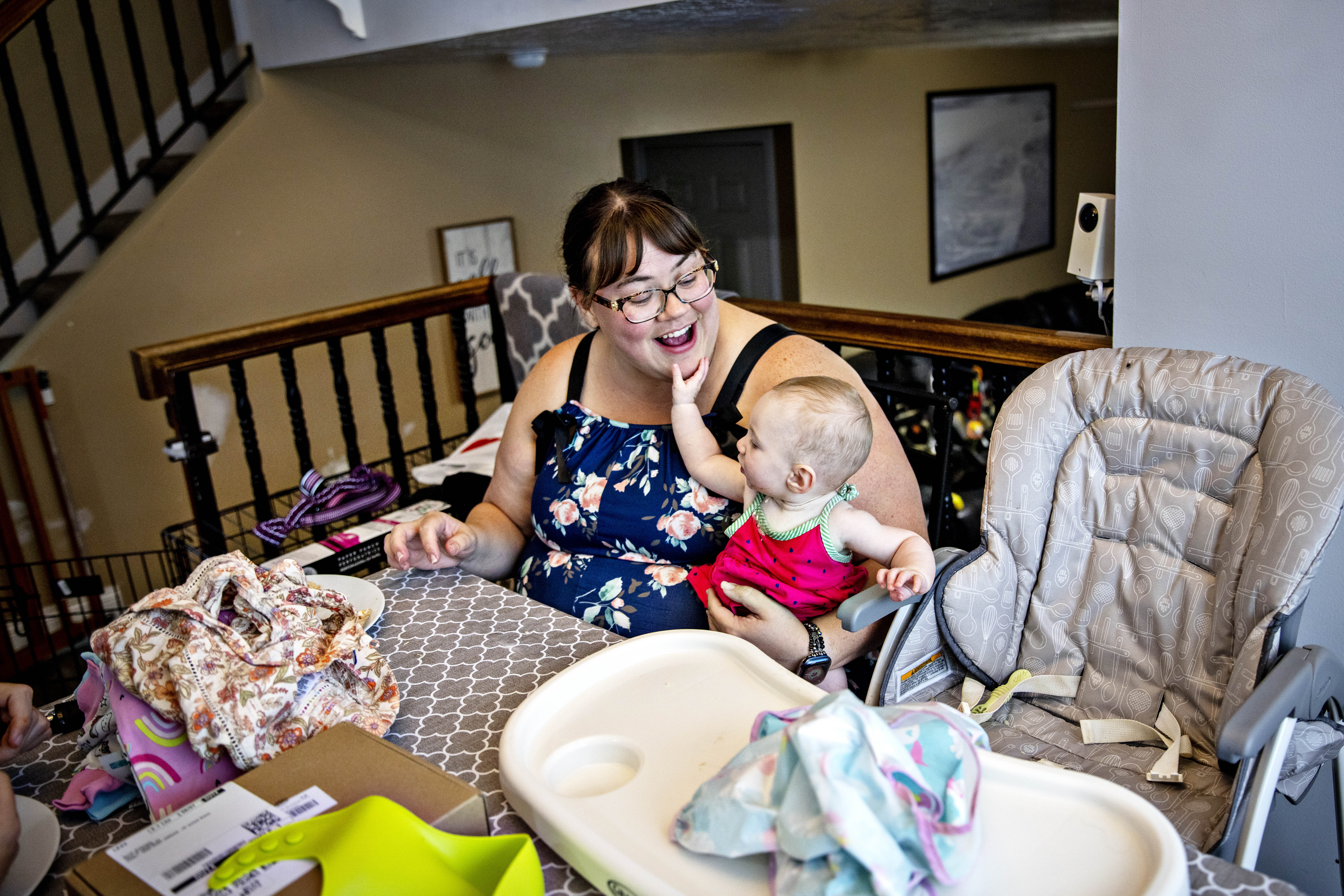
Sarah grew up in Utah, in an area known locally as Happy Valley. Its Mormon majority “put on the persona of happy, golden families that followed all the church teachings,” she says. But Sarah, an elementary school teacher, wanted something else – and found it in Brian, an Amazon delivery driver who’d also left the church.
Their decision to marry was easy, but getting pregnant proves harder. Her doctor recommends medication, but she is reluctant to take it because her insurance doesn’t cover fertility. The staff offer to code it as treatment for an irregular cycle, a twist of American healthcare that makes payment dependent on the goodwill of providers. A few months later, she is pregnant.
She’d hoped for a natural birth but, like 70% of American mothers, accepts pain medication. Her delivery costs $3,000 at a hospital President Barack Obama called a model of “high-quality care at below-average costs”. He’s right; that’s reasonable for the US. The next day, the paediatrician diagnoses the baby, Vivian, with jaundice and recommends formula. Sarah, 33, had hoped to breastfeed exclusively and sobs on the way home, then turns to Facebook, hoping for guidance, or at least commiseration, from other mothers. Their insurance, at $500 a month, won’t cover postpartum specialists like a nearby facility that offers lactation advice and pedicures for over $1,000 a night.
Sarah already worked overtime just to cover the unpaid portion of her 12-week maternity leave and Brian is losing a week’s salary to be home for his daughter’s first days. Fathers in management-level positions at Amazon get up to six weeks paid leave; Brian gets none.
Brian does what he can to help Sarah when she returns to work, like packing her pumping bag each morning, but with his long hours, the burden falls mostly on her. She is so exhausted from working all day after being up much of the night to feed Vivian and pump, that she nearly nods off on the 45-minute drive to her parents’ house to retrieve Vivian. To stay awake, Sarah sips a Slurpee and munches crisps. She lost over 50lb before she got pregnant, but is quickly regaining it.
At lunch with colleagues one day, her chest constricts and she’s unable to speak. Her midwife tells her postpartum depression can be hard to recognise at first, but Sarah thinks there’s something larger.
“In the Latter Day Saints community and in America more broadly, we praise mums for giving everything for their children. Then we feel like we aren’t good mums if we don’t.” She always prided herself on flouting the expectations of her religious community, but as a mother, she still feels the weight of those expectations, while no longer having the support that community could have provided. Sarah’s midwife prescribes Prozac.
At her follow-up visit, Sarah reports that her anxiety has diminished, but her depression is worse. The midwife recommends a higher dosage. A few weeks later, Sarah isn’t sure whether the drug is helping. “It’s hard because there are still some days that are really bad and then other days that I actually feel more like my normal self. So it’s still kind of hit or miss.”
She contemplates finding a new job with more flexibility and higher pay, maybe as a corporate trainer. But that would require her to travel and she’s not sure the benefits are worth the time away from her family. Even admitting she wants to spend more time with her child feels brave in a culture that has used that kind of deep personal desire to push women into serving as the social safety net. Still, it is her way of staying true to who she is, in hope she can live more fully and maybe even – along with her daughter – thrive.
Motherhood in numbers: USA
•
70% of women have an epidural (75% of those withhealth insurance have one; 50% of uninsured)
•
90% of fathers attend the birth
•
No guaranteed paid maternity or paternity leave
•
No national universal daycare
•
$14,000 a year: average daycare cost
Abigail Leonard is the author of Four Mothers: An Intimate Journey Through the First Year of Parenthood in Four Countries, published by Sceptre at £20. Order your copy online at The Observer Shop
